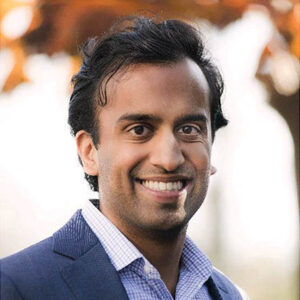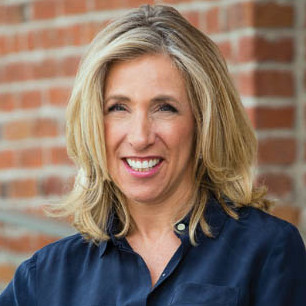Of all the challenges associated with entering the cannabis industry, one issue towers above the rest: raising capital. As long as companies are working with a federally illegal plant, investors will remain cautious and entrepreneurs will continue to find creative ways to fund their companies.
In 2016 and 2017, the industry was buoyed by the impressive performance of companies on the Canadian stock exchanges. A subsequent wave of reverse mergers with entities based in the United States infused much-needed cash to help launch some of the first big American brands. But when the much-hyped Canadian stocks did a faceplant in 2018 and 2019, investors headed for the sidelines and have more or less stayed there since.
The solution du jour to the fundraising dilemma is the special purpose acquisition company, or SPAC, a “blank-check” investment vehicle that allows entrepreneurs to raise hundreds of millions of dollars on spec following a prescribed format: A leadership team outlines a general plan to acquire an unspecified private company (or companies) and transition the acquisition(s) to the public market through an initial public offering (IPO) within a specified period of time. Cannabis SPACs are shell companies—meaning they have no assets of their own—and like other investment vehicles are regulated by the U.S. Securities and Exchange Commission (SEC).
A handful of SPACs have completed IPOs on major exchanges in the U.S. and Canada over the past few years, providing a windfall for an industry still struggling to find its legs. While they represent a new opportunity for entrepreneurs, investors, and organizations seeking a chance to become part of a grander plan in the marketplace, it remains to be seen whether SPACs will result in successful companies and how the process will influence future IPOs.
A ripe environment
SPACs have been around since 1993, when David Nussbaum created the first one as a workaround for the U.S. prohibition on blank-check companies. Most investors viewed them with a great deal of skepticism, and the New York Stock Exchange didn’t accept its first SPAC listing until May 2017. Interest in the vehicles exploded after the first one landed on the NYSE. Predictably, they caught the eye of cannabis entrepreneurs and investors, who saw them as an opportunity to take a fresh approach to company-building in a capital-constrained market.
SPAC “sponsors”—the executive team that put together the offering—typically are battle-tested business experts able to leverage their financial expertise and connections, both of which are critical for a smooth transition from private to public markets. Investors can participate on the ground floor by placing funds in escrow, and they are able to redeem (i.e., pull out) their investment before the IPO if they don’t like the final terms of the deal.

“It’s clear there continues to be an equity capital shortage in the cannabis market,” said Vikas Desai, chief executive officer at New Jersey-based Achari Ventures Holdings Corp., which recently formed a SPAC to raise $100 million to build a company that invests in equipment, hardware, technology, and hydroponics. “So, ultimately, this is a vehicle that clearly suits some of the industry dynamics and provides capital in dislocated markets to help companies go public slightly prior to when they could [launch an] IPO.”
As new markets open across the U.S., major cannabis operators are partnering with like-minded companies or acquiring smaller companies to fill gaps in their operations and help them meet consumer demand and bolster their brands. Meanwhile, SPAC sponsors are scrambling to find attractive “targets” to acquire, and in a young industry, there are only so many companies that fit the bill.
Joe Caltabiano was a cofounder of multistate operator (MSO) Cresco Labs; he stepped down from his role as president in 2020. Soon thereafter, he launched a SPAC called Choice Consolidation Corp., which aims to replicate Cresco’s model and become one of the next big MSOs: a vertical, plant-touching company targeting limited-license markets like Illinois, Pennsylvania, Massachusetts, Ohio, Arizona, and Nevada. Caltabiano said SPACs appeal to a certain kind of investor because they allow more flexibility than other types of investments.
“SPACs have become very popular for a few reasons,” he explained. “It is an expedited way to take a company public. Investors today like liquidity, and they want to invest in a public vehicle where they can move in and out, given the volatility that exists in any new industry. In private investments, you don’t have that same flexibility. So a public vehicle, which is exactly what a SPAC is, is very attractive to the check writers, so to speak—the bigger investors who want to see some level of liquidity.”
By the numbers
SPAC sponsors generally target a company they can build into an investment worth three to five times the amount of the initial raise. So if a SPAC raises $100 million, it is expected to build a company worth $300 million to $500 million. Once a SPAC determines the initial raise amount, it has one to two years to find its target(s) and execute a business combination (known as a “qualifying transaction”). SPACs are prohibited from identifying their targets prior to the capital raise.
In August, Viridian Capital Advisors reported SPACs had completed approximately $5 billion in qualifying transactions; Viridian expects a second wave of approximately $5.9 billion. “Nine SPAC mergers have been completed totaling $5.4 billion in merger value from $1.8 billion in IPO proceeds, two SPAC mergers are pending totaling $2.1 billion in merger value, and seven SPACs are searching for a target after raising $1.2 billion from IPOs,” the company reported. “Five of the seven SPACs searching for mergers in the cannabis industry have raised $853 million in IPO proceeds this year, much more than the $397 million raised through traditional IPOs year-to-date.”
New-York-based GreenWave Advisors, which provides financial research and consulting services to the cannabis industry, in October 2021 counted twenty-two cannabis SPACs seeking a total of about $3.9 billion.
For the most part, SPACs fall into three buckets:
- The SPAC has been announced, but no targets have been identified.
- Targets have been identified, but the unding hasn’t closed.
- Funding has closed, and the IPO is completed (“de-SPAC’ed”).

Of the twenty-two SPACs that have announced their presence, GreenWave founder Matt Karnes said eight have completed their IPOs and are listed on a stock market; another dozen are still looking for targets. Some of the more notable SPAC transactions thus far include:
Subversive Capital Acquisition Corp.: After raising $575 million for a plant-touching enterprise, Subversive acquired Caliva, OG Enterprises Branding, and Left Coast Ventures. The resulting vertically integrated entity, TPCO Holding Corp. (more commonly known as The Parent Company), now trades on the NEO exchange. Officers and board members include a former Yahoo exec and rapper Shawn “JAY-Z” Carter.
Mercer Park Brand Acquisition Corp.: Mercer Park spent $567 million to merge with Glass House Group, a vertically integrated operation in California. Prior to the transaction, investors redeemed $224 million, putting a snarl in the timetable. The vertically integrated business combination, now known as Glass House Brands Inc., trades on the NEO and includes a former member of the California State Assembly, a former assistant coach for the U.S. Olympic basketball team, and high-profile attorney Robert Hoban on its board of directors.
Silver Spike Acquisition Corp.: Silver Spike combined with WM Holding Company LLC (Weedmaps) in a transaction valued at $579 million. The resulting entity, WM Technology Inc., now trades on the Nasdaq. Silver Spike Acquisition Corp. II and Silver Spike Acquisition Corp. III ($250 million and $125 million raises, respectively) are seeking targets.
Merida Merger Corp.: Merida is in the middle of a business combination with online sales-and-information platform Leafly Holdings Inc. Valued at $385 million, the deal is expected to close later this year, resulting in Merida adopting the Leafly name and listing on the Nasdaq. Existing Leafly shareholders will own about 72 percent of the new entity.
Karnes pointed out another particularly noteworthy SPAC: Tuatara Capital Acquisition Corp., which is seeking targets after raising $175 million earlier this year. The entity is backed by New-York-based private equity firm Tuatara Capital, which raised $93 million for cannabis investments in 2016, stunning almost everyone. Even more intriguing are the acquisition corporation’s underwriters: top-tier firms J.P. Morgan and BMO Capital Markets. The SPAC’s board includes officers and former officers at Curaleaf and General Electric.
Caveat emptor
While SPACs may appear to be a more straightforward way to build a publicly held cannabis company—as opposed to building from scratch—there is no shortage of challenges to completing a qualifying transaction. Once the target has been identified, the sponsors need to obtain shareholder approval and fill any gaps between the capital raised and the funds required to complete the acquisition or combination. There is also the matter of getting approval from local and state cannabis regulators, which can vary in complexity.
In a perfect scenario, a SPAC would be well-funded with management teams in place and ready to roll just as the feds greenlight a nationwide legal market. Even without federal legalization, however, MSOs are proving large, vertically integrated operations can be successful with sufficient capital, experienced leaders, and savvy business plans in place.
For investors keeping their eye on the SPAC hopefuls, there are some key indicators to watch. Because investors are buying into a work in progress, most SPACs rely on a strong management team to convince potential money providers the venture ultimately will become a profitable enterprise. However, confidence-inspiring leadership comes at a significant cost. Karnes said SPAC sponsors typically take 20 percent or more of the equity in the new company.
Karnes has been following the cannabis industry since 2014. Before that, he tracked the technology industry going back to the 1990s and the wild ride of the dot-coms. While seasoned business leaders are more likely to succeed at turning SPACs into public companies, he said, success is more difficult to predict with newer cannabis-industry operators. “With newcomers, it’s hard to say. I really would look at the track record and the sponsor, and then the deal,” he explained. “But it’s hard, and I do know there has been some pause because it’s been difficult for these SPACs to find targets.”
One of the key factors when evaluating SPACs, Karnes explained, is how many “redemptions” the group has to account for after it announces its targets and completes the funding process. “Redemptions,” in this case, refers to the amount of money investors withdrew from the proposed deal after the targets and other details of the transaction were revealed. In other words, it’s a key barometer of how much confidence the investors have in the leadership group and the company (or companies) they agreed to acquire. In general, Karnes said, his research leads him to believe the less money redeemed, the greater the return.
Of the SPACs that launched IPOs over the past few years, Karnes said the Cannabis Strategies Acquisition Corp. transaction, which resulted in Ayr Wellness, has performed admirably. However, the MTech Acquisition Corp. transaction that resulted in Akerna has fared less well: Akerna’s stock debuted at $27 per share in June 2019 but now hovers around $3 per share. Looking back at the redemptions on those deals, Karnes said, there were almost none for Cannabis Strategies Acquisition Corp., whereas MTech experienced redemptions of nearly 90 percent.
In some cases, SPACs never get off the ground at all if they fail to meet the requirements under which they were established. At that point, the entity might abandon its original goal and move on or even target a different market. In early 2020, Bruce Linton, cofounder and former CEO of Canopy Growth Corp., led Collective Growth Corp. to a raise of $150 million. When Collective failed to find a target in the international hemp market, the group pivoted to the automotive industry. The SPAC eventually merged with Innoviz Technologies, an Israeli company that produces LiDAR sensors and perception software for autonomous-driving vehicles.
In a deal announced in early 2021, William “Beau” Wrigley Jr. planned to merge his multistate, vertically integrated cannabis company Parallel with “Scooter” Braun’s Ceres Acquisition Corp. in a deal valued at $1.9 billion. The entities planned to take the resulting company public via Ceres’s listing on Canada’s NEO exchange. In September, the parties called off the business combination after several investors lost confidence in the proposal’s financial projections, according to Reuters.
Increasing SEC scrutiny
Over the course of her career, Julie Herzog has closed more than one hundred transactions valued at more than $1.5 billion in cannabis, food and beverage, manufacturing, real estate, retail, technology, and other sectors. A cofounder and partner at Fortis Law Partners in Denver, she has watched the commercial cannabis industry evolve since Colorado passed the first recreational legislation in the U.S. in 2012.

Law Partners
Herzog acknowledged SPACs represent a growing trend in the cannabis industry, but she also cautioned that the Securities and Exchange Commission is taking a closer look at qualifying transactions. Commissioners recently met to discuss disclosure requirements—financial projections, in particular—and are considering additional measures to protect investors.
“If an investor is investing in a SPAC based upon a management team and the promise of future acquisitions, that is very different from investing in a traditional IPO where you know the management team, its products, its financials,” she explained. “So the areas the SEC is particularly looking at are conflicts of interest and focusing on compensation for people who are putting the deals together, because they think investors are not getting good enough information about the management fees and other types of fees that founders have to gain in their own compensation.”
With smaller companies struggling and capital difficult to come by, experienced business operators are in a unique position to raise large pools of money and then pitch alluring deals to potential investors. “I would say investors in the cannabis industry generally have a pretty high risk tolerance, and they’re not the same types of people who are investing in IBM,” Herzog said. “There is also the increasing likelihood of federal legalization as the industry grows and matures, and then hopefully it becomes less regulated and there is more flexibility. So investors may see a huge opportunity that may not be present in other industries right now.”
Calculating the raise
Building experienced and savvy management teams is one of the primary ways SPAC groups are able to lure investors and make a strong case for the success of the potential enterprise. In the case of Choice, Caltabiano is joined by former Green Thumb Industries CEO Pete Kadens and Lisa Gavales, who serves on the board of directors for Jane.com and Bluestem Group. An experienced leadership team with a track record of success can be a lifeline for struggling companies that might need strong partners with deep pockets to survive or expand their operations.
Choice raised $172 million in 2021 and currently is in negotiations with multiple targets, with the ultimate goal of raising about $750 million to $1 billion in enterprise-value acquisitions, Caltabiano said. “That will take a lot of the learnings from my experience being one of the pioneers in regulated cannabis and applying the things I’ve learned over the past few years to a new MSO, with the goal of kind of creating cannabis 2.0,” he said.

“You’ve got a lot of people who got into this industry thinking it was going to be this quick windfall, but if they’ve been in the business for an extended period of time they recognize very quickly it’s not that,” he added. “The industry is hard, and some people had expectations that didn’t get realized, and now they’re anxious to bring on some additional high-level talent and access to capital. They still have a vision, and the CEO or executive team is staying on, and they just need help with additional human or capital resources.”
Over the past few years, Achari Ventures Holdings Corp. has invested in more than fifteen companies; its current portfolio contains twenty-one companies on the ancillary side of the cannabis industry. When the team was deciding on a target amount for its raise, Desai, the CEO, said they wanted to be realistic about the size of the market and how many companies are operating in the realm. Achari set its initial goal at $100 million.
“We sized our SPAC where we saw the market opportunity,” Desai explained. “I think the first cohort of [SPACS], you clearly saw they went big. If you’re a $300-million SPAC, you’re trying to do a $900-million to a $1.5-billion transaction. So that universe set is extremely small in a space this nascent, especially on the ancillary side.
“So we sized ours accordingly, and at $100 million it opens up the world at about $300 million to $500 million as the target,” he continued. “We think the target universe there is way more deep and robust, and you can take a company at that size and with a great growth strategy you can grow into a much larger market cap. We think there’s a deep set, especially with these ancillary or cannabis-adjacent verticals, some of which have been living behind the scenes.”
While the emergence of SPACs undoubtedly has been a major boost for the industry as a whole, injecting about $3.95 billion in just the past few years, there’s no clear indication yet about how successful any of the new enterprises may be. If all goes well, some of the companies will be in prime position for the day federal legalization opens the industry to new investors in a big way, including large institutional investors that won’t engage until cannabis is legal from the top down. Herzog likens the situation to what’s happening with law firms across the U.S.
“If you look at law firms, there were so many national and international firms that wouldn’t touch cannabis,” she said. “But now, it seems like every week law firms are announcing their new cannabis expertise. A lot of us kind of continue to loosen up. And I think once we see full legalization, you’ll see Wall Street jump in head first.”










